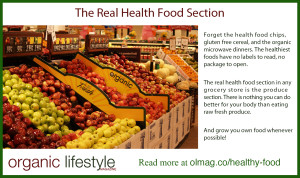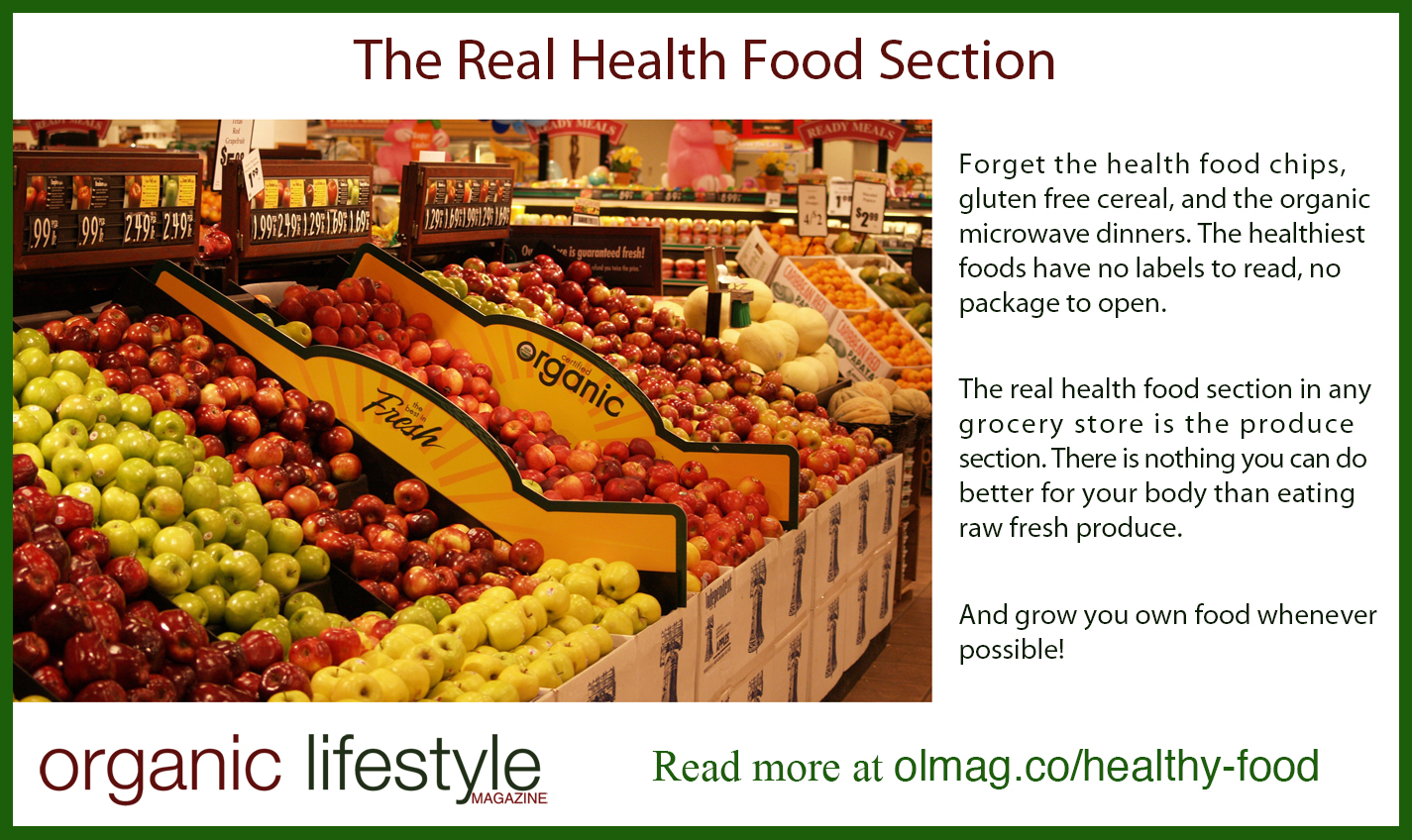Healthy Food Choices
Does Eating Vegan, Organic, or Gluten-Free Make You Healthier?
There are many different trends now in the food industry. Many Americans are becoming more aware of the current state of public health in this country, as well as of the numerous issues surrounding conventional and factory farming. As a result, they have begun to buy more foods that are labeled all-natural, organic, vegan, non-GMO, vegetarian, and so on. Others are required to buy foods with these healthier-sounding phrases on their labels because of medical concerns such as Celiac disease.
Gluten-Free Foods
Celiac disease is an autoimmune disease triggered by the consumption of gluten, which causes permanent damage to the intestinal villi. This negatively affects the body’s ability to absorb vital nutrients.This condition is diagnosed now more than ever before. Its prevalence has spread awareness about gluten in general since many people never even knew what gluten was before Celiac became such a buzzword. Non-diagnosed people have also begun to experiment with reducing or eliminating gluten from their diets to see if certain symptoms improve.
 At first, gluten-free food choices were hard to come by in stores and restaurants. One could only find them in a tiny spot in the frozen-foods section or the pasta aisle in health food stores and healthier grocery stores like Whole Foods Market or Trader Joe’s. The prices were exorbitant. However, people paid them and began to demand more gluten-free foods. Consequently, the supply increased, and now many regular chain grocery stores feature gluten-free aisles. In addition, certain restaurants, like PF Chang’s, offer gluten-free menus. Even fast food chains and stadiums have caught on—Domino’s Pizza now advertises gluten-free pizza and many stadiums sell gluten-free snacks. While prices for gluten-free foods have come down due to increased supply, they are still quite expensive.
At first, gluten-free food choices were hard to come by in stores and restaurants. One could only find them in a tiny spot in the frozen-foods section or the pasta aisle in health food stores and healthier grocery stores like Whole Foods Market or Trader Joe’s. The prices were exorbitant. However, people paid them and began to demand more gluten-free foods. Consequently, the supply increased, and now many regular chain grocery stores feature gluten-free aisles. In addition, certain restaurants, like PF Chang’s, offer gluten-free menus. Even fast food chains and stadiums have caught on—Domino’s Pizza now advertises gluten-free pizza and many stadiums sell gluten-free snacks. While prices for gluten-free foods have come down due to increased supply, they are still quite expensive.
Vegetarian and Vegan Foods
The majority of people interested in healthier eating, as well as animal rights, have seen the horrific videos about the treatment of animals in conventional factory farms. If you haven’t seen them, simply do a search for factory farming and you will get pages upon pages of graphic images and videos from organizations like People for the Ethical Treatment of Animals (PETA) and others who have exposed the truth of what actually goes on in these facilities. These images and videos have successfully turned many former meat lovers into hardcore vegans.
Cruelty aside, these videos and images have also exposed the truth about many issues including:
- The lack of sanitation in these facilities
- The rampant spread of disease among the animals
- How meat from diseased animals is still processed and allowed into the American food supply
The media also now focuses more on the many benefits of plant-based diets. Multitudes of books, doctors, celebrity nutritionists and endorsers, documentaries, and other forms of media illustrate how consuming less (or no) meat can reduce obesity and improve many health conditions.
So whether it’s for the love of animals, for fear of eating chemically-altered food from diseased animals processed in filthy conditions, or for the love of clean arteries, more and more people are choosing to ditch meat or animal products altogether and eat only plants.
Organic, All-Natural, Non-GMO
Awareness continues to spread about how toxic pesticides, antibiotics, growth hormones, steroids, and genetically-modified foods are to nearly every system of the human body. Accordingly, more people now choose to alter their families’ budgets in order to accommodate the lofty cost of organic, all natural, and non-GMO food and other products.
Soy is Not a Healthy Alternative
Many vegan and vegetarian foods contain high contents of soy. Soy appears on food labels as many different names (soy protein, hydrolyzed soy, soy lecithin, etc.), and many mistakenly believe it is a healthy alternative to dairy and animal products.
The soy industry has convinced the general public that soy is healthy. They point to Asian cultures, which have regularly eaten soy for thousands of years and look how healthy they are! This is only part of the story. These cultures have indeed consumed soy for thousands of years in their traditional diets. Those who have maintained these traditional diets do have higher levels of health and longevity. However, those cultures do not drink soy milk, eat soy burgers, soy cheese, tofurky, or other processed foods using soy products as binders, fillers, and protein substitutes. They eat small quantities of traditionally fermented whole soy foods like tofu, miso, tamari, natto, and seitan—the key words being: small quantities, fermented, and whole.
The highly processed soy food-like substances that would-be health-conscious Americans now massively consume are not healthier choices for the human body than the foods they are attempting to replace. According to Dr. Kaayla T. Daniel, author of The Whole Soy Story, “hundreds of epidemiological, clinical, and laboratory studies link soy to:
- Malnutrition
- Digestive distress
- Thyroid dysfunction
- Cognitive decline
- Reproductive disorders
- Infertility
- Birth defects
- Immune system breakdown
- Heart disease
- Cancer”
So What’s a Health-Conscious Person to Do?
Healthy eating is not necessarily about reading labels on packages. It’s more about avoiding the packages in the first place by choosing whole, real foods that you prepare yourself. Michael Pollan’s words “eat food, not too much, mostly plants” really sum it up. The “eat food” part refers to actual whole foods that are part of nature: foods that grow, run, swim, or fly. Chemically-altered food-like substances that sit in boxes on shelves for five years are not included in this description of food.
If you choose a gluten-free diet, eat whole grains that don’t contain gluten like quinoa, amaranth, millet, and buckwheat. If you are a vegetarian or vegan, don’t eat “veggie” burgers from box in the frozen section. Instead you can easily make your own from wonderful nutrient-rich plant foods like whole grains, mushrooms, beans, and chopped veggies, and bind them together with cooked grains like millet or quinoa. Don’t use soy milk as a substitute for dairy. It is healthier to get your calcium and vitamin D from plant sources and small amounts of sunlight. Instead of “healthy” sodas and sport drinks, just drink water or freshly brewed teas or fresh juices.
If you eat meat, research where your meat comes from and how it is processed. Look for the words “organic, pastured, grass-fed” for beef and lamb and look for “organic” and “pastured” for poultry. If this type of meat is too expensive or is not available, then you should either get the very best you can afford and consider reducing your meat intake.
If you have a busy schedule (and I don’t know anyone who doesn’t), learn to plan ahead. Make big batches and freeze meals in healthy portions so that the frozen foods you take to work are ones you made yourself with ingredients you can pronounce.
It’s a wonderful thing that more people want to live healthier lives. Gluten-free, vegetarian, vegan, and other diets can be healthy. Reading food labels and knowing what the long words mean is a daunting task. Why not just avoid foods that need labels in the first place? That is the best way to start living a healthier life.
